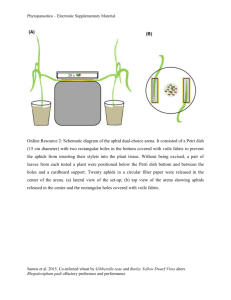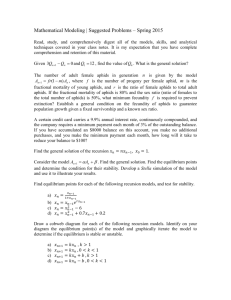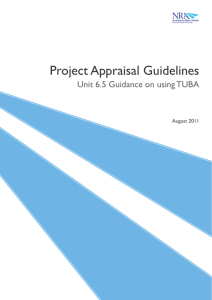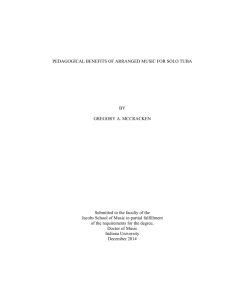Tuba-root (Derris elliptica). As an insecticide
advertisement
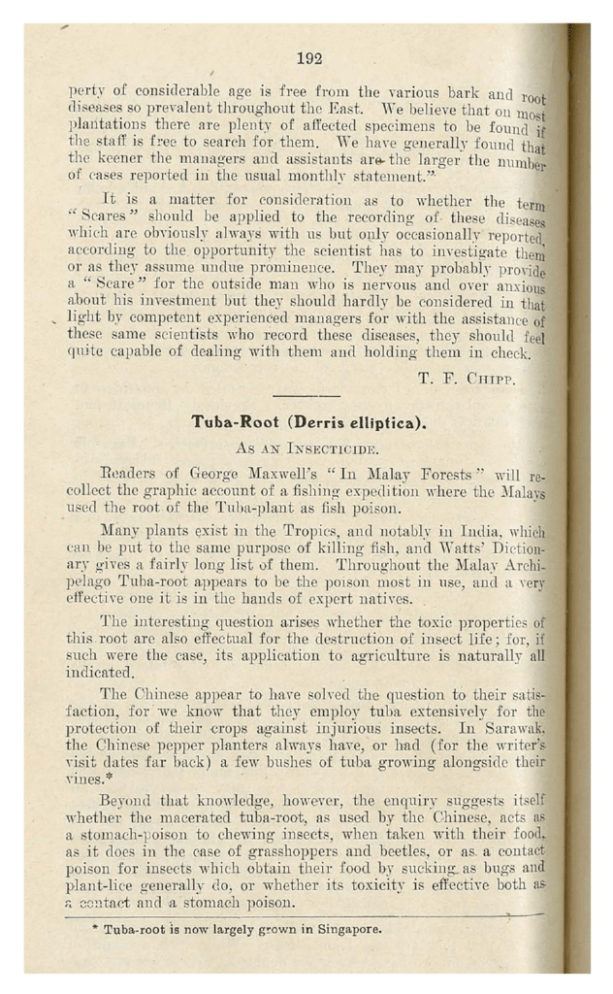
192
,
perty of considerable age is free from the various bark and root
diseases so prevalent throughout the Eas t. We beliel'e that Olllllo t
plantatiol1S there are plen ty of affected specimens to be found if
the staff is f,'ec to sear ch fOT them. We have gellerally founel that
th c keener t.h e managers and assistants ar~ th e larger the muuber
of, eases reporteel ill the usual mon thh- statement.""
It is a matter for consid era tiou as to whether the term
Scares" should be applied to the r ecording of the e elisea es
whi ch are obviously always with us but oDly occasionally reported
accorcling to th e. opportunity the scielltist ha s to investigate then;
or as they assum e undue prominence. They may probably pro\ide
a « ,'caTe " for the outside mall who is nervous anel over allxiou
about his investment but they should hardly be considered in that
light by competent experien ced managers for with the assistance of
th ese same scien tists who TecOl'd these diseases, they should feel
quite capable of dealing with them aod holding them in check.
«
T. F .
CRIPP.
Tuba-Root (Derris elliptica).
As
AN I NSEC TICIDE .
Readers of Georg'c Maxwell's "In Ma l.ay Forests" will recollect the graphic account of a fishing expcd i tion where the Malays
used the root of the TlLba-plant as fish POiSOll.
Many plants ~xi st in the Tropics, and notabl., in Inilia, "'hieh
can be put to the saIn e purpose of ki lling fish, and Watts' Di ctionary gives a fairly long list of them . Throug hout the Malay ArchipeIago Tnba-root a.p pea.rs to be the poi son most in use, ami a y eT)"
ciIecti ve Olle it is in the hands of ex pert nati ves.
The inte.resting quest ion arises whether the toxic properties of
this .root are also effectual for t he dcstruction 0:[ insect life; for, if
such were the case, its application to agri culture is naturally aU
inclicated.
The OhLn ese appear to have sohed the question to their sa.tisfaction, fo r ' we knolY that they employ tuba extensil' cly for the
protection of their ·crops against in juriou s insects. In Samwak.
thc Chinese pepper planters always have, or hacl (for the writer'
visit dates far hack) a few bushes of tuba growing alongsidc tbeir
"ines."
Beyond that Ju, 0\\,1eclge, however, the enquiry suggests itself
,yhethcT the ma ceTa ted tuba-Toot, a used by the hinese, acts as
a stoma<)h -poison to chewin g insects, when taken with their food .
as it c10es in the case of grasshoppers and beetles, or as. a contact
poison for insects whi ch obtain their food by suckin g.. as bugs and
plant-lice generally do, or wh etheT its toxicity is effective both a
c. ::ion tad and .a. stomach poison.
,
* Tuba.-roo t IS now largely g!:own in Singapore.
193
The "Journal of Agricultural Research" of 15th August, 1919
blished by the Secretary of Agl'iculture, Washington, has uniteI'
title" Den'is as an lnsectic·icle" an e:xllaustive article on the
lebJ'ect
. , and some of its tests and co nclusions are g iven below.
it
~t1
But fir t, to prepare the ground, the writer may bc permitted
to gire his own eX'perience in the 11se of hiba-root in t he course
of hi cu·l tum 1 work.
A believer in the orthoelox staJlda rel sprays and emulsions found
ill text-books, the writer had only once casually hied tuba-root
and that without any notable resu.Jt. He gave it no further th?ught
until, in the presence of the wholesale 8ml persistent destruction of
his bean-plots under the attacks of " Ag1'O'ln!jZ{£ phaseoli" he was
per un.ded to give tuba a thorough a.n d well controlled trial.
" Ag1'o'ln!jza phaseoli," a fly, deposits its eggs under the skin
of the stem of the beans, a very few days after germination of
.the seeds; t he la.r vae feed on the tender t issues o:f t he stems just
helow the fi rst pair of leaves: the skin a week 01' so sHer germination, turns from green to bro·wn and on pressing wi th t he fingers,
it is fonn(1 to be hollow: the leaves fade and drop, and on spli tting
open the little stem, the small yellow larvae are found imbeeleleel in
the de troyed tissue.
Every plot was attacked "mel such is the virulence of this pest
!hnt it is quite an exception for one llila~lt in 2{) to s11l'vive. Amongthe man,' remed ies employeel again t the pest were the foll owing:,'teeping the seeds in a 5% solution of COlTosive sublimate.
Hubbing- the YOllIlO' stems with lime anel powdered sulphur. The
IIpplication oJ tobacco duet. Rubbing the seeds in sifted earth
sprinkled o\'~r with" neem-oil" and putting some of this earth in
e/lch hole at the time of sowing.
The In t device, alone, proved, to some extent, effective-about
20", of the plant being sa.ved.
A trial of tuba was then made on a fielel of 8 bed, 66 feet
long, with 1056 seeds of Lima Beall (S'mall Sieva) on the 28th
October 1919. 'Ten Ollllces of tuba.-root were well pounded in a
wooden mortar, the juice thoroughly e:,pressed, and the fibre exhaured in 210' gaUons of water.
Tuha.-\\'ater was then applied to each young Iylant at ih p, rate
of a cigarette tin fu.]] to 4 plimts, m01'1ling a.n d evening. 'rhi~ was
conti nued for 15 d,avs, until the plants were snlfficiently estabhBhed
to he past a:ll elanger, which is only present eluring the JIr,,!. stage
of their existence, when tbe stem i quite tender.
Only 16 eeds failed to germina.te aJ~d of th e 1040 plants that
('ame up, not one has since died.. And to-etay, thn plot i~ showing
the most Yigorous growth, II livin g testi mony to the potency of t he
tUba-root as a plant-insect killer.
194
A point worthy of 110tice is that the" Ag·ro1nyza" fly is there
still quite manifest, a.nc1 every morning, it can be seen ill n umber
flittin g rounel a.nel about t he plants which it still c1.amages to SOllle
exten t : the pest has not elieel, but it has heen completely p1'evented
from laying its eggs in the young stems. 'rhe savin~ LrE the If~\'e
which it perforates to. a state of fine lace, is not, hy 'lily means m;
easy ma,tter, but f.ailing h~ha-root, it is hopeel, by mea ns of ~1I 11~hllr
elusti ngs in the e;lTly momings, gr.ac1uall y to overcome it.
'l.'he Tnba-plant "Derris elliptic(/,; " in Malay A7c{/!/· T~.ba, a
legmn.inose, may be seen gro~l'ing in t he Economic (Ja,rrlens, a a
low hush, hut it is <1, climbing plant with a, short trt!ll k and lOll"
tmiling branches. rrhe root system is extensive anc1 among the
bunc1les of " a7ca1· M.ba" solel in Chin ese shops, pieces of root 8 feet
long are not uncommonly fo un el. In eligging for roots in the
Economic Ga,relens, the lon gest, so f:a,r found, was 5· fea;; in length:
this shortness may be d ue to the llnsnitaJbility o:f: t he soil in which
it gro-ws-a soil too sanely to retain moisture in hot dry woa.ther.
Accoreling to a ChiJleSe informant, tuba ShOl1lel be p1a.ll te,] not
far fro m water, whi ch a.ttracts th e roob, thu s favouring c,ll'ly licl't.
lopment, all d more frequent cuttings.
It is to be noted tlmt the trials related in the J ourna.l of. Agri.
cultural Research weTe made with ehied imported roots, which
implies, j ll dg ing from the effects r ecord ed, tha.! it loses none of its
potency by keeping.
l "oncy
ta,bles are given in the course .of the fl,l·ticle with details
o
of tests ()if tuba root a}Jpl icc1 as a elry powd er a.nc1 as a sprav mixtlll'e
with anel without soap.
'rhe followin g extracts are taken from thi s paper. A tes t was
made oJ' th e effects of. tuba as a, contact poison on Aphids, wit h a
spy.ay mi xtlll'e of 1 pound of powder to ] 00 gall ons of water with
t he following results :
Percentage of Aphids Jiving on plan ts at the end of
Number of
1st day 2nd day 3rd day
5~jl
day 6th day 7th day Bth day
...
Aphids
treated
182
150
209
172
Average
Aphids
untrea.ted
159
52.2
25.3
19.1
• 33.7
24. 7
22.6
11.0
20.3
lOA
7.3
9 .0
23.2
4.4
2.0
B. l
19.7
2.2
2.0
5.7
19.7
0.5
0.0
3.3
18.6
2.8
J 2.7
35.0
19.6
12 .7
8.5
7.4
5.6
4.0
96
105.6
104.4
137. 1
114.6
169.7 I
0.5
0
235.2
'1'ES'I' Wl'rH TUBA POWDIm USED AS A Dus'l;.
.-Precentage of Aphids living on the plants at the end of
lIum ber
of
1st
day
-
2nd
day
96
111
235
-
Aphids
untrRet-
ed.
180
4th
day
6th
day
lOth
day
13th
day
15th
day
O.r
I
Aphids
treated
157
3rd
day
43.7
38.4
49.5
47 .6
36.4
21.0
29.7
31.0
31.2
6.3
11.7
16.5
16.6
2.5
9.0
15.3
3.1
.6
4.5
9.7
0.0
0.0
.9
1.2
0.0
.9
.4
0.0
0.0
0.0
00
'14.8
29.5
16.4
10.8
4.5
0.5
0.3
0.0
128.3
146.1
179.4
231.6
315. 5
-103.3
'1~lese h~bl es
315.5 3155 +
(two a LIt of many) arc followed with the re-
IIIn l'k :
(( HeferelJ ce to the two trubles shows that the percentage o:t Ull., trea.ted "Aphis» gradually in creased from the first tIay of t he
"test onward.
'1'he in crease was due to the birth of n ew
., Aphids on the untreated plants. Aphids were al so born on the
(. treated pla.nts from bhe time the insecticide wa s a:p plied, until
"the reproducing 1110thers had died. Since, practicall.y, all the
(( Aphids on the treated pllmts were doad ,~t the close 01' the tests,
.. the newly bam YO llng one: mu st haye beeJl killed b'y eo wiJlgin
.. clo e proximity to the particles o:E poweler still remaiJlillg on the
(( plants."
]~~'~'lCIJmCY OF " TUBA» AS A S'I'OMACll POISON
AGAI NS'I'
V,IllLOU S I NSECTS.
Poiaio B ee tle lwrvae. Tuba used in variolls strel.lgths up to 1
pound oE powder to 128 gall s. of water W<LS J'oUJJll VC1'Y cftec~i\' e .
Practi cally aJllu1'I'ae were killed withi.l.I ~ 8 hours. Applied a~ au st
the tests were equally conclu sive.
Tent Oaler[lilla·rs. All J1lix tures "aryiJlg ill strength from onl'
POLUlil to 8 gallons of water to 1 pound to 200 galloJl ' \I' eTC f:OlllJ(1
elIecti ve.
Apllle--tree bra.nclLes were t horoughly spmyeil un l, af·ter t he
roliage hail dri ed, 20 to 40 Jl ewly hatchet1 lanae were placeil 0 "
caeh branch. The <.:aterpiHars beg1an to show sigJl s ot disco llli'or t
within 48 hours aU ll wel'e pTac.:t ica li y all ilea.(l ill :h-oJU 5 to 10 da."~ .
In llO case, WI.IS allY ma terial all.lOliut 01' feeding obse rved. In a
second seTi es of tests the lar vae were placed on the bTaudws UJJll
196 spraycd after they had beg un to form tbeir tcnts. Ti nd el' !-IICSI'
condition , sprays conta ining one pound of powdcr to 50 gallous o(
Inl,ter and 1 pound to 100 g allon s, killed a;l[ the larvac wi thi n 2 1
holll',;, \\'hen 1 poun d to 200 ga llons 'a nd 1 pOlwd to 400 gall ons or
wHtcr were used, all the lan'ae were not kill ed within 11 days, hUL
thc Jew whi cb rem ai JJ ed alil'e wcre I'cr), snl>tll alld inactil'c,
Used a,; a d ust, thi s !Ua ter'ial killed a ll the tr ea ted hll'l'lIe
wi th in a lI'eek,
Oa/,;-lI'o'l"lI/S, '.1'11'0 small oa,k tr e~, ou which about ;lOU C>ltcrpi ll ar- (Anisota 8enal o1'ia) wer e feedi.ng, were sprayed tho roughly
lI'ith Tuba at the rate of 1 pouml of pO II'del' -to 2-5 gallons of water :
SOlLP wa added at t he mtc of onc l)Ollllcl to 50 gallon', and a
knapsack-sprayer wa s used. "Vithin 24 bours, the larvae became
illa ctim an d cea 'ed to feed, and at t he end ot (j ilH.)'S no li l'Lng one
co uld be found,
As a check on this test, powd ered arsenate o(
lead Iras app.li cd a t thc ra te o f ] pOlwd to 50 gallon s of wa.ter, and
alm o;t idcnt ical r es ults we re olita in ed.
liyphftnlria ('town (caterpi ll urti wh ich II'ca,l'e a lI'eh inside
lI' hi <-i , th ey work, c1el'our illg the .1'01 iage ellclo, ed), 'JIb e caterpillal" about one t hird g row n, werc ,b lled lI'i t ltill a wcek by II
;Pl','Y of ] pound o[ pOIl"dcr to ,j ga llo)l' of wate l'. Mix t ures rangillg from I pO llnd to ,jU ga llons to 1 pouncl to 200 ga llons of waler
we re not ,;atis l',acto r il." cffcci;il'c, si n ee ll eawl.r all of the s prayed
Jol iHge was eaten and mlt all 01' the catc rpj.!,la r:; were ki ll cil.
Dalal/a /fIlTac . Two apple-tree,;, on whielt htl'ge w loJl ics of
Il ea 1'1.-' full-grown applc cl ata na (lJalalla 11l1:nislm) were Jcetli llg.
wpr e Spl'Hl'cd with 'I\lba at t he rate of 1 VOUJlt! to ,;0 g allons or
water.
Twcnty-fou l' ho ul's la te r, on~ li"in g larn. wac Joun il 011
on(' t ree , and tll'O o n t.he other ,tree. Th e g rounil und er thc Ire's
wa ' t hi ck!,I' :;p rinkl eti wibb dead lal'vac.
(' abbage 1I'0'r lil s. Applied at t he ra te ot I jJoullll to 25 gulIons of wa ter a ll t lt e larn le .in tll'O eagc-test-' were ki lled wi t l,i n 21
hOlll'S.
~'rcth od:; we re CIllJ11ol'cd to t r.l'C(' t he t lllm-pO ll'dcr and. sprilY
lnixtu l'cs ill t hc bodie:; oJ: i)l seots alld t he I'cs ult:; s lt OIl' LltaL luba
powd e r dllstc<l UpOIl insects doe: Hot pa ss i11to tuc traci.lll e, iJul il
limi ted amOI18lt of it mu." lodge ill the s pir;ades : jll OHle r blwt lhe
l' a pollT,; anti cx.i1aJH t io us Jrolll It ~jJra .r be eJI€cti" e, .it is Jlec"CS>Jal'."
for t he ; pra,I'cti iJl,;ects to ca lT." som e ot t hc solu tion on t heir bodies,
i n o rtl er t ha t the exha la t io n ma,l- pass into the spira cles in as un·
di luted a co nili tio n as possible. A lter beiug dusted t he in,ee!.
seem to swall ow so me of the powel' whi ch later may act a' a ,stomach
pO iSJll. SO,I P so lu tions contai n ing tuba extract pass frec l." into lhe
ti pira c1es a ll d filially reaeh bhe ">tr iou ' t iSSll C';, I) ut Vrobll,l!l y Uw
cxtl'ilC't k.i ll " by firs't affecti ng t he Jl c l'I'c-tiss uc. (Thc ,"bol'e pllysio.
logi(O
(JI lO I1 (O IIl :; io Il S arc based 011 Illi r-l'osco pi ca l CSH milla t ioll!'i Hlld
"hellli cal .lllanipullltiolJ, too long allll too techni cal lo bc in,;cricd
ill tili ;; paper ) .
197
C ON eLUSIONS .
'I'he preceding experimen ts, much a.bridged as they are here
sholl' tba t t be toxic principle of the tuba-root kills illsects
rr ~ctiJl ()' both as a contact and as a stomach poison. It kills ollle
i;"rc ts : asily, and others with difficulty, but it usuaUy acts slowly
. lid seemS to kill by motor pa,ra.lyslS.
•1
'.I'he aho\'e tests were made under strict contml at the Agri,,,Itllral Board s T esting Labora.tory of Vienna (Va), They put
;lCl'ond diSj)11te the effi cac.l' of tL~ba-root as a plant-insect poison and
"i;'e it a bLgh place among agriculbur.al insecticides.
o
•
il'CII .
E.
MATFIlll O.
The Angsana Tree.
Yet an other a.venu e 01' th e Angsalla t ree (Ptm'oC(£'I'pllS in dtic lIs)
has slIcculJ1ll eel to t he "(~i sea se" that has alread y· deprivecl this
"Olllltl'." 01' SO IllC of its fi ll est avelllle '. It will be recallcd by ma.ny
holl' these a "enues J'1a\'e di sa.ppeared 011e after t he other, first tlle
olle 011 bhe sea front in Ma lacca., then rubo'ut 1907 on e hundred trees
ill Pcmlllg, followed by epidemic. among these trees at Tapah,
1\",11,1 1\lIbu, KuaJa LlImpor and 'l'aiping. A shor t while ago
thc avenu e along t he sea f ront a,t Singapore was al 0 swep t Rwa.\'.
.H the cud of. :May th is year (19'1-9) som{) trees Rt the ell el of: au
arCllll e at '.l1aJlglin Barracks, Singapor e, begau t o show t hc well
kllo\\,11 ~y ll1 p toms .
Four month s a:fterw'Lrd s th c "cli seasc" had
"dranccc1 cOJl sidera.bly a:tong t he Avenue, but llot s uccessively taking toll of: eveTj' tree for occasionally Oli e was omittcd, but so mall Y
tl'ces were affected t ha,t i t was deemcdn ecessaL'Y to cut thc avelluc
do,i·lI. A look-owt wa s kept Jior f ungi bllt theTc wa,s n o opportuni ty
to make a deta iled illvestigatio'u of t lle tissues of the trees. T he
olJly f ung us collected wa s OllC 01' bhe tropi cal varieties of Polypo/'u s
((.'(Ulo dcl'lIbus) luci (Z lIs, sometim cs a stipita.te form an el sometimes
1Il0l'C ungui cula te. This is ilJteresting as the fun g i formerly c01le('ted from t bese trces have becn Pol)Jsti ctus occide ntal'is, ])'r ..,
PolflS/ictu s t /o'/'i(/{IJ/'Vll s, Berk., ' 'chizophylvwlL co'/'n1IMbne, Fr., alld
l'O/flS/'i ctu s h-i;/'S1(,t llS, Fr, So far n o fuu gus has aetu,al ly becn ob'('I'rcd i It the ti ssue.
'On th e othel' haud it is lUlclerstooCl tha t tbi strce is generall y
pl'upaga ted by means or cuttings. Kow thcrc ,wc some who hoLd
\II,aL th c rcaSO Il of: t h is tree etying ot1' in the m'alluel' it dO'es i ~ a
'illestion of scnil e decay and no t of di sease. The theory put 1'01'\I'lli'll is tha t the age of th e individual tree m ll st he coulltec1 hOIll
the lasf;. time its stock was growll il'om a. sced. It is 'Illi te hkel'y
this 111a.'· be many gellera.tiolls and corresponeli"lIg1.l' a cOJ.ls idera,ble
1I111lliber 01' years. Tt is a.lso to be pres nmecl t ha t t he >Ll'eJ1u es aJl!l
I!I'OIlPS o[ t rees wh ieh liie ofI a,t t he ::;ame time, in the same localiti es, arc plan ted from t he same "toek 0'.1' ellt tiugs allll ,,-olllt!
thc['c[ol'e be approxillla tel.y th e same <I.gc. In view 01' thi s t he
followill g ,,,-tide takcn :from the Ga,rdcus Chl'olJi cle Vol. I;XVI,
Xo. 4'111, page 190 is of iu terest.
•


